The Xiaomi Mi Note Pro and Mi Note Review
by Joshua Ho on September 11, 2015 9:00 AM EST
Xiaomi has been a significant part of the Android ecosystem for a number of years - even before they had ever launched a phone, they were already getting some level of attention from XDA-Developers and other custom ROM communities in the form of ports for MIUI. The launch of the Mi1 smartphone went almost unnoticed in places like the US, and compared to something like the Galaxy S2 at the time there wasn’t all that much to be amazed by other than price. However, the launch of the Mi2 was notable as it was the first smartphone to launch with Qualcomm’s Snapdragon S4 Pro with quad core Krait CPU and Adreno 320 GPU. Although the baseline specifications of the phone were amazing, the truly incredible part was the price at 1999 RMB or 315 USD at the time. The Xiaomi Mi line has continued to develop, with high end hardware at a mid-range price. In the past 4 years, we've continued to notice how Xiaomi seems to always follow this same pattern. This brings us to the Xiaomi Mi Note Pro and Mi Note, which represent Xiaomi’s attempt to conquer the phablet market with this formula.
The Mi Note and Mi Note Pro have the same industrial design (dimensions, weight), but differ in specifications to represent different price bands of product. They weigh in as follows:
Xiaomi Mi Note |
Xiaomi Mi Note Pro |
|
| SoC | MSM8974AC Snapdragon 801 4x Krait 400 @ 2.5 GHz |
MSM8994 Snapdragon 810 4xA57 @ 2GHz 4xA53 @ 1.5GHz |
| GPU | Adreno 330 @ 578MHz | Adreno 430 @ 600MHz |
| RAM | 3GB LPDDR3 933MHz | 4GB LPDDR4 1555MHz |
| NAND | 16/64GB eMMC | 64GB eMMC |
| Display | 5.7-inch 1920x1080 IPS LCD | 5.7-inch 2560x1440 IPS LCD |
| Network | 2G / 3G / 4G Qualcomm MDM9x25 IP UE Category 4 LTE |
2G / 3G / 4G Qualcomm X10 (Integrated) UE Category 6/9 LTE |
| Dimensions | 155.1 x 77.6 x 6.95 mm 161 grams |
155.1 x 77.6 x 6.95 mm 161 grams |
| Camera | 13MP Sony IMX214 rear camera, 1.12 µm pixels, 1/3.06" CMOS size, F/2.0. OIS 4MP F/2.0 FFC OmniVision OV4688 |
13MP Sony IMX214 rear camera, 1.12 µm pixels, 1/3.06" CMOS size, F/2.0. OIS 4MP F/2.0 FFC OmniVision OV4688 |
| Battery | 3000 mAh (11.4 Wh) replaceable | 3090 mAh (11.74 Wh) replaceable |
| OS | Android 4.4 with MIUI 6 (At launch) | Android 5.0 with MIUI 6 (At launch) |
| Connectivity | 802.11a/b/g/n/ac + BT 4.1, USB2.0, GPS/GNSS, WiFi Display | 802.11a/b/g/n/ac + BT 4.1, USB2.0, GPS/GNSS, WiFi Display |
| SIM Size | 1x NanoSIM/1x MicroSIM | 1x NanoSIM/1x MicroSIM |
| Launch Price | 2300 RMB for 16GB (~$360) 2800 RMB for 64GB (~$439) |
3000 RMB for 64GB (~$470) |
Immediately, we can see that the Mi Note Pro is clearly targeted for a more high-end audience than the Mi Note, as the Mi Note Pro has a higher resolution 1440p display along with a more expensive Snapdragon 810 SoC and 4GB of RAM. The Mi Note by comparison has a 1080p display, Snapdragon 801 SoC, and 3GB of RAM to make the device cheaper. Both have the same design, dimensions, cameras, battery (90 mAh difference in favor on the Pro), and various other high level specs. The Mi Note Pro at a high level is par for the course for high end smartphones. At 299 RMB/470 USD, it noticeably undercuts other flagships in this category by about 230 dollars or more.
Design
As always, one of the most immediate things about any smartphone will always be the design. Even before you turn the phone on, it’s possible to form an opinion about how a phone feels ergonomically. Going even further, just looking at a device render or some press photos is often enough for people to start forming opinions about the industrial design of a phone or tablet. In many ways, this is one of the most important parts of any device though, as poor design can make a device unbearable to use. In the case of the Mi Note and Mi Note Pro, which both share the same chassis, we see a significantly evolved version of the Mi4 design.
Starting from the front of the phone, this lineage is clear. The top left side of the phone has the Xiaomi logo, which seems to be a staple of Xiaomi phones. The earpiece is slightly sunk into the glass, with a proximity/ambient light sensor directly above it, and the front facing camera to the right of the earpiece. The vast majority of the front face is display, but the capacitive buttons are directly below the display. Like all of their previous phones, these buttons are menu/home/back, but in the case of the Mi Note and Mi Note Pro the menu button is actually a multitasking button. Although I suspect that the menu button is kept out of tradition or something similar, Xiaomi should probably change the icon to a multitasking icon to make things less confusing. The edges of the glass that covers almost all of the front face is also rounded at the edges, which means that edge swipes feel smooth and seamless. However, this does affect glass lens durability as drops to the front face of the phone are more likely to shatter the glass lens.
Moving on to the back of the phone, the Mi Note line has a camera and a dual LED flash on the top left of the phone. Other than some logos and regulatory information, this is otherwise just an expanse of glass that curves significantly at the edges. Rather than just curving the top surface like the display glass, the back cover glass has a bend throughout the glass near the left and right edges. This makes for a noticeably more comfortable feel in the hand. However, this basically means that the phone is even closer to all-glass than devices like the Xperia Z3. Combined with the lack of camera hump, this makes the Mi Note line incredibly adept at falling off of flat tables. Out of all the phones I’ve reviewed so far, I don’t think I’ve ever had a phone as prone to sliding off of tables as the Mi Note and Mi Note Pro. I would definitely invest in a thin TPU case or something similar if I were to buy this phone.
Leaving behind the back of the phone, the sides are similar to the Mi4 with an anodized aluminum frame and chamfered edges. The right side has the volume rocker and power button, with the volume rocker above the power button.
The bottom contains the speaker and a microUSB port which is towards the left side of the phone. Although this makes for worse compatibility with various docks and isn’t symmetrical, this helps to improve usability of the phone in landscape when charging.
The left side contains the SIM tray, and the top contains the 3.5mm headphone jack. There’s no IR port here, so there aren’t any particular holes other than ones for microphones.
Overall, I found the design of the Xiaomi Mi Note line to be impressive. Other than the problems that come with slippery glass, I found the design to execute well when it comes to attention to detail. The logo on the front of the device may be a bit much, but I otherwise had no problems with the phone in everyday use. The ergonomics of the device are excellent as the power and volume buttons are appropriately placed and spaced far enough apart that it’s impossible to confuse the two. The curved back glass means that it won’t wobble on a table but also fits well in the hand. A potential improvement I would request here is porting the sound from the speaker from the bottom of the phone to actually point towards the user, and possibly moving the 3.5mm jack to the bottom of the phone.


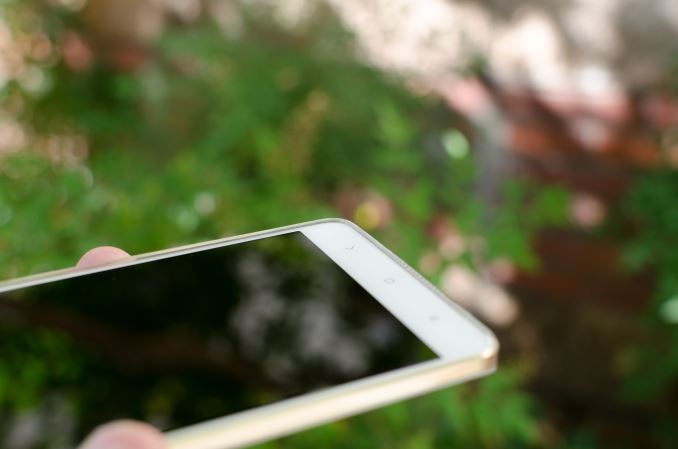
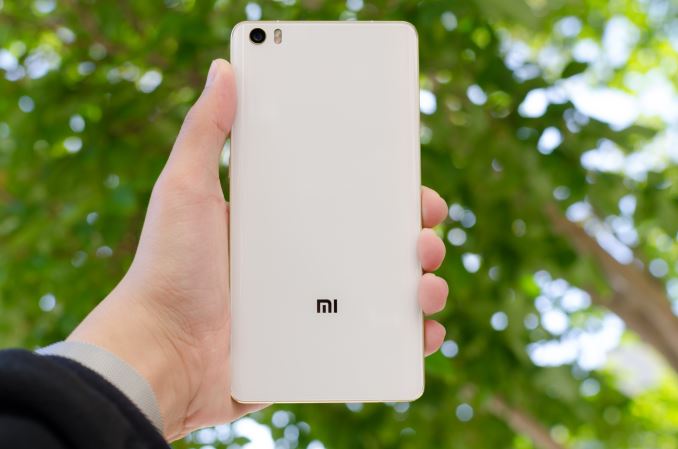
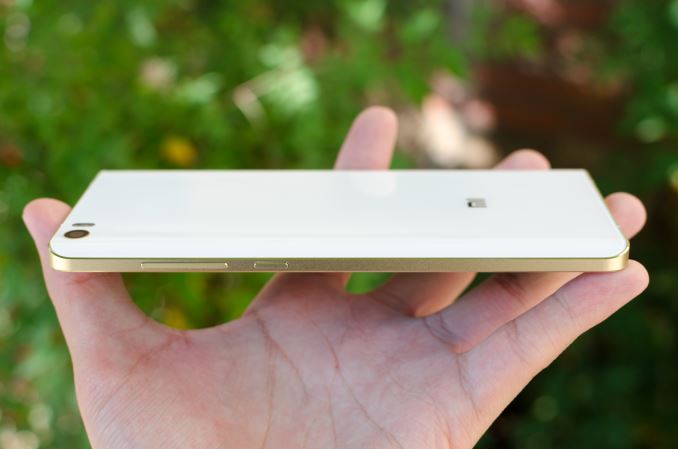
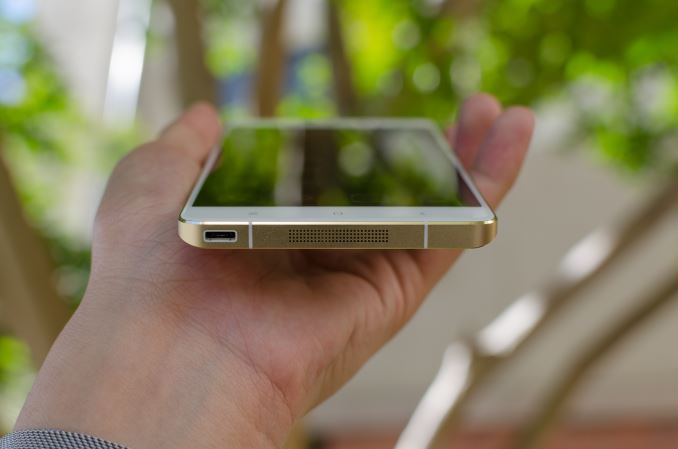
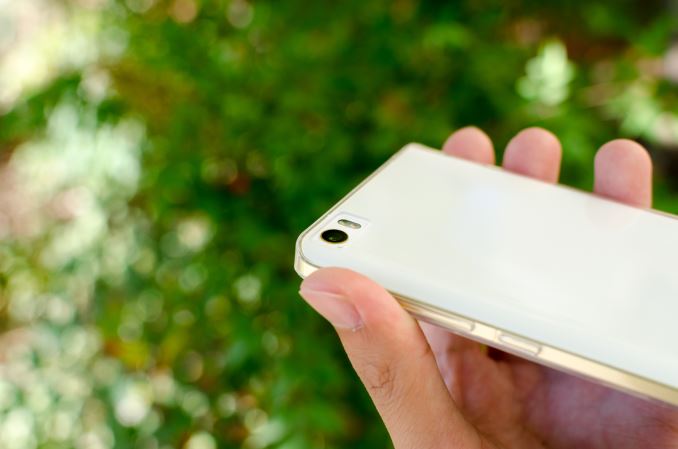
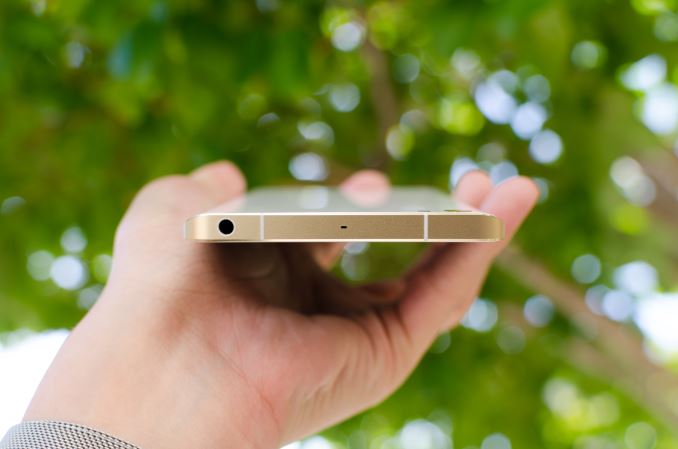








94 Comments
View All Comments
prisonerX - Saturday, September 12, 2015 - link
Why would anyone care about that?Did you just discover that China is a communist/authoritarian?
sonny73n - Sunday, September 13, 2015 - link
WTF is wrong with you people? Is capitalist better than communist? How about Saudi Arabia - our "ally"? Stop mixing politic and nationality with tech. FYI more than 80% of products in the U.S. are made in China that included the beloved iPhone. Oh iPhone which costs ~$210 to make but priced at $650. How's that capitalism for you? So please keep the politic bs and racial comments at CNN, Fox or whatever fake news site you like. This is a tech site for God's sake.Yaru - Sunday, October 4, 2015 - link
I'm not a big fan of the a Chinese government and some of their internet policies.......but so what? It's a review of a product not some geopolitical analysis.Also while it's nowhere near the same level, the US government DO give subsidies companies (though tech industry isn't one of them). All goventments gives out subsidies to one degree or another.
Also, where do you think a lot of tech companies manufacturer their products? Those savings from the cheap labor, where do the profits goes? Back to US tech companies.
Penti - Friday, September 11, 2015 - link
I don't see what's up with all the whining, these devices are not sold in Europe by retailers and distributors or by operators. Through their sales in China it's one of the big five brands though. Nobody whines when it comes to Oppo or OnePlus reviews.soccerballtux - Saturday, September 12, 2015 - link
'for those who don't spend their whole lives reading about this'--LOLanother good review, thanks. impressive phone...bit worried about where my data gets stored (Chinese Clouds are polluted with government eyes), no microSD, and thankfully this doesn't have NFC or Qi so I'm less tempted to purchase, but wow does that have a refined look or what...
Penti - Saturday, September 12, 2015 - link
I only saw local and Google as options in the pics. I'm pretty sure you can use it without a MI account, and thus nothing syncing to the "MI Cloud".BMNify - Saturday, September 12, 2015 - link
Mi cloud is opt-in and Xiaomi has migrated its Mi cloud servers to Singapore and India for the International customers and it is handled by Amazon Web Services, here is the link to AWS itself talking about Mi cloud: https://aws.amazon.com/solutions/case-studies/xiao...Penti - Saturday, September 12, 2015 - link
I'm pretty sure they have removed the option to sync app data to MI Cloud any how. No need to sync contacts, calendar or photos to the Mi Cloud if you don't want to either.aces170 - Saturday, September 12, 2015 - link
AT nice to see a review of a xiaomi phone, with the usual in depth perspective. You do have a lot of readers here in India, and we are glad you covered for the region. I don't understand the north American contempt for anything Chinese, especially since everything they use is made in China. Xiaomi is a good brand so far, as Joshua pointed out having the attention to detail that is lacking in Android world. I think you could have covered the audio bit more in detail as note pro shines in that department.Margalus - Saturday, September 12, 2015 - link
Most of it was not contempt for anything Chinese. Most of the complaining is simply because you have read thru lots of pages of details and reviews before you find out that this phone will not work with any carrier in the USA. That is the problem. Somebody asked for them to put a sentence in saying this at the beginning and then the comments fill up with arrogant Europeans screaming about "muricans" and their entitlement attitude. This is, and always was an American website. So if they start reviewing things that won't work in America, it's pretty simple to just say that at the beginning so that people don't waste their time reading about something that they can't use.They can also do the same if they review something for America that won't work in Europe or Asia so that people from those areas don't have to waste their time if they don't want to.